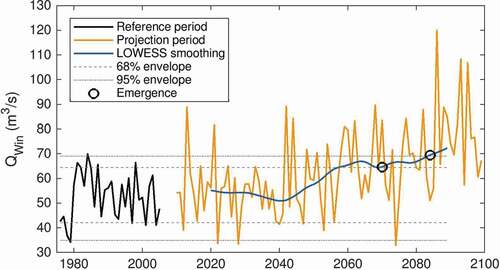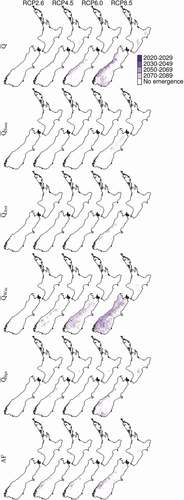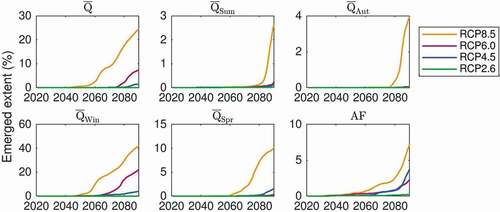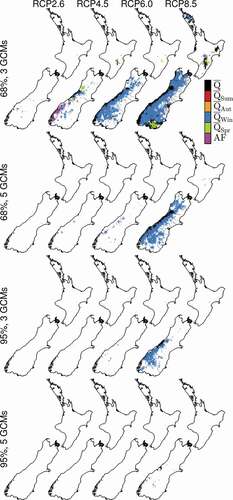Figures & data
Figure 1. Analytical derivation of the time of emergence. Annual series during the reference period (black) define the 68% and 95% internal uncertainty envelopes (grey) which set the bars beyond which the LOWESS smoothed series (blue), derived from the annual projection period series (orange), must cross and remain crossed for emergence (circles)

Figure 2. Times of emergence for six hydrological metrics across four RCPs using the emergence criteria of 68% reference period variability and three agreeing GCMs

Figure 3. National emerged extents for six hydrological metrics over the course of the century under each RCP. For emergence, three GCMs must agree in relation to the 68% envelope of reference period data



